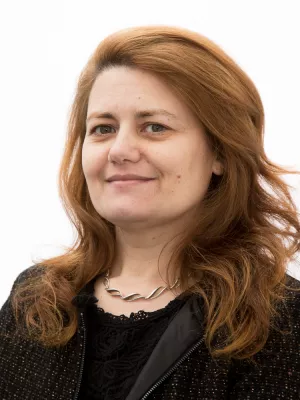
Ana Nordberg
Universitetslektor

Patents, Morality and Biomedical Innovation in Europe : Historical overview, current debates on stem cells, gene editing and AI, and de lege ferenda reflections
Författare
Redaktör
- Daniel Gervais
Summary, in English
This paper discusses the existence and scope of the morality exception from patentability, in Article 53 (a) of the European Patent Convention. The analysis will look into the history of the provision, debate its rational and interpretation by reference to three examples of technology areas: stem cell research; gene editing and AI/big data analytics.
Bioscience innovation has always generated heated ethical debates in society. The patent system is not immune to such discussions. The European Patent convention contains a morality and ‘ordre public’ exception in Article 53 (a) EPC, preventing patentability on grounds of lack of ethical compliance of the invention with prevailing standards. Many other jurisdictions have similar provisions or somehow impose restrictions on patentability based on similar ratio legis. The topic is further regulated in Article 6 of the Biotechnology Directive (which is also adopted in the EPC implementing rules).
The ratio legis of this norm, the standards for its applicability and legitimacy to develop them are far from clear or consensual.
Innovation in cutting edge biosciences implies always a certain level of uncertainty concerning future technological possibilities. The same can be said in regards to any legislative attempt to regulate such technologies. The Biotechnology Directive was enacted in 1998 after a long legislative process. At the time, the academic and policy discussions were based on mere abstract scientific possibilities and imaginary dystopic eugenic futures. Today we are confronted with realistic possibilities for life saving genetic health interventions, that can be made possible provided there is enough incentive to innovation in genetic therapy. Science and technology has progressed considerably in the last 20 years. It will be argued that developments in scientific knowledge and technology are a factor to be taken into consideration in legal interpretation and de lege ferenda proposals.
Bioscience innovation has always generated heated ethical debates in society. The patent system is not immune to such discussions. The European Patent convention contains a morality and ‘ordre public’ exception in Article 53 (a) EPC, preventing patentability on grounds of lack of ethical compliance of the invention with prevailing standards. Many other jurisdictions have similar provisions or somehow impose restrictions on patentability based on similar ratio legis. The topic is further regulated in Article 6 of the Biotechnology Directive (which is also adopted in the EPC implementing rules).
The ratio legis of this norm, the standards for its applicability and legitimacy to develop them are far from clear or consensual.
Innovation in cutting edge biosciences implies always a certain level of uncertainty concerning future technological possibilities. The same can be said in regards to any legislative attempt to regulate such technologies. The Biotechnology Directive was enacted in 1998 after a long legislative process. At the time, the academic and policy discussions were based on mere abstract scientific possibilities and imaginary dystopic eugenic futures. Today we are confronted with realistic possibilities for life saving genetic health interventions, that can be made possible provided there is enough incentive to innovation in genetic therapy. Science and technology has progressed considerably in the last 20 years. It will be argued that developments in scientific knowledge and technology are a factor to be taken into consideration in legal interpretation and de lege ferenda proposals.
Avdelning/ar
- Mänskliga rättigheter
- Health Law
- Affärsrättsligt centrum vid Lunds Universitet, ACLU
- Juridiska institutionen
Publiceringsår
2020-04-30
Språk
Engelska
Sidor
243-267
Publikation/Tidskrift/Serie
Fairness, Morality and Ordre Public in Intellectual Property
Dokumenttyp
Del av eller Kapitel i bok
Förlag
Edward Elgar Publishing
Ämne
- Law
Nyckelord
- Patent law
- AI patents
- Gene editing patents
- Stem cell patents
- Patent exceptions
- Patent eligibility
- Private law
- Patenträtt
- Civilrätt
Status
Published
Forskningsgrupp
- Human Rights Law
- Health Law
- Lund University Centre for Business Law (Swedish abbr: ACLU)
ISBN/ISSN/Övrigt
- ISBN: 978 1 83910 437 4
- ISBN: 978 1 83910 436 7